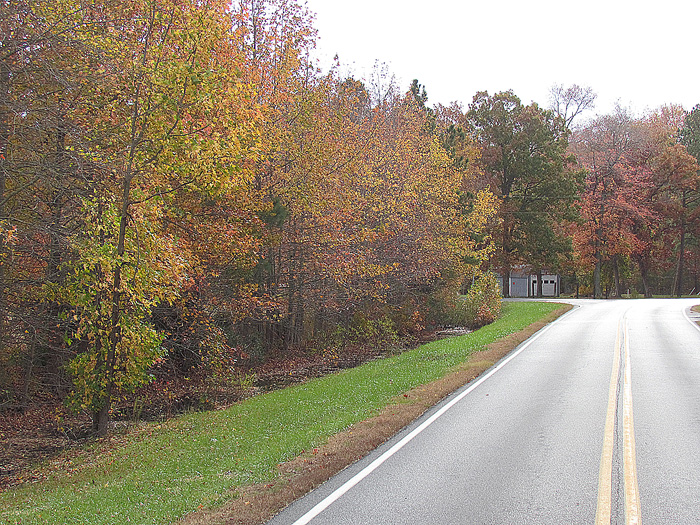

|
Having spent the autumn celebrating birthdays in Minnesota and California and staying in the New England states to watch the changing of the leaves, it got a bit colder than we liked, so we found the shortest route from Atlantic City, New Jersey to Myrtle Beach, South Carolina. It was a 600 mile trip on mostly two-lane highways, which we broke up into three days to enjoy the sights and sounds along the way. And what a splendid drive it was. Here is a scene of our drive through southern New Jersey, a scene that would repeat itself most of the way to Florida. Keep us informed by clicking on the email link Larry and Glorine. | ||
|
|
||
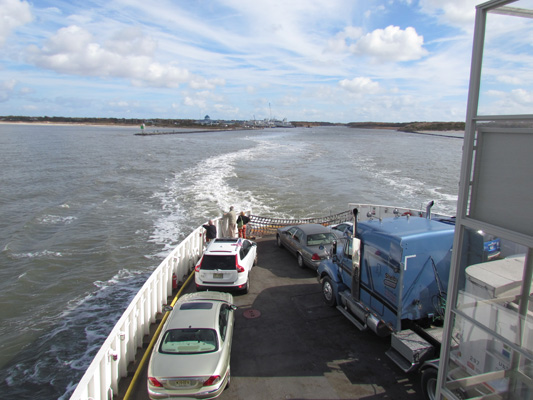 |
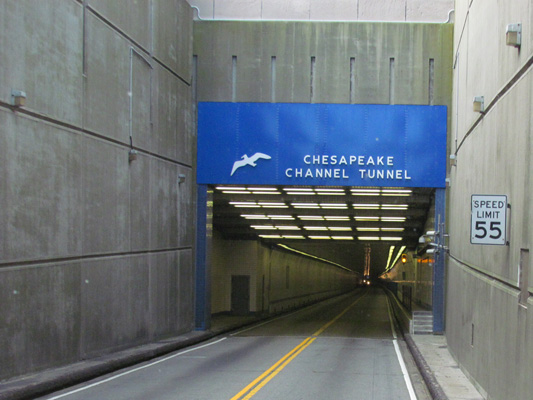 | |
| The shortest route called for a ferry crossing over the Delaware River from Cape May, on the southern tip of New Jersey to Lowes, Delaware. The hour and a half trip saved us both lots of time and fuel, at $4 per gallon. It was an enjoyable cruise. | Our next water experience was crossing the Chesapeake Bay through a 23 mile complex of trestles, bridges, causeways, tunnels, and artificial islands, once dubbed the "Seven Engineering Wonders of the Modern World." Driving the RV through the two lane tunnel was a white knuckling experience. | |
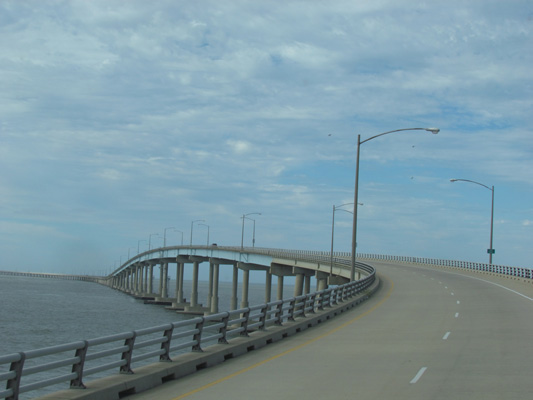 |
 | |
| Once above ground, the scenery was quite spectacular. The bridge was started in the 1960s at a cost of $200 million, none of which came from local, state or federal taxes. Revenue bonds were sold to private investors and paid back through tolls collected on both ends. Well worth the experience. | Our second stop was New Bern, a cute little town in the lowlands of North Carolina. As we walked along the river front, we found a soda fountain/souvenir shop that turned out to be the birth place of Pepsi Cola in 1893. Above is a listing of some of their ingredients. | |
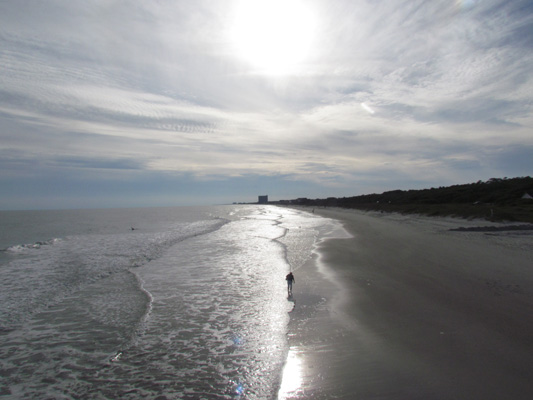 |
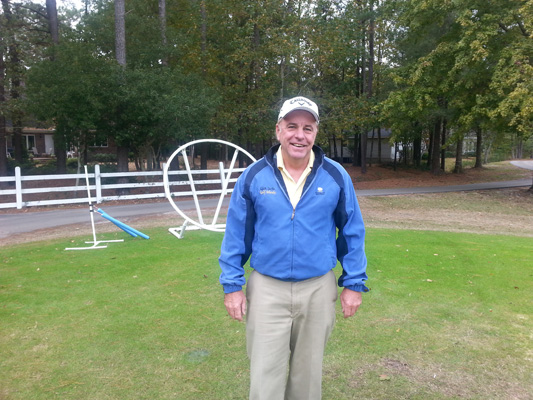 | |
| After a three day road trip, we settled in for ten relaxing days in Myrtle Beach, South Carolina. With the broadest and longest white sand beach in the world, it attracts millions of visitors each year--obviously, November is not the peak season. We nearly had it all to our own. | With Myrtle Beach having 130 golf courses, Larry decided this would be cool place to take golf lessons. The school was billed as three days with a maximum of four students. When Larry arrived, he was the only student, so he got private lessons from the school's owner, Glen Davis. | |
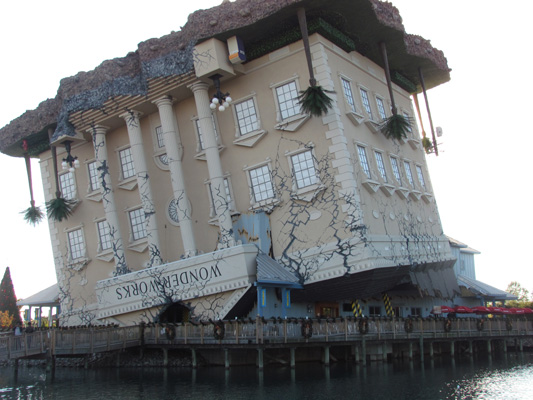 |
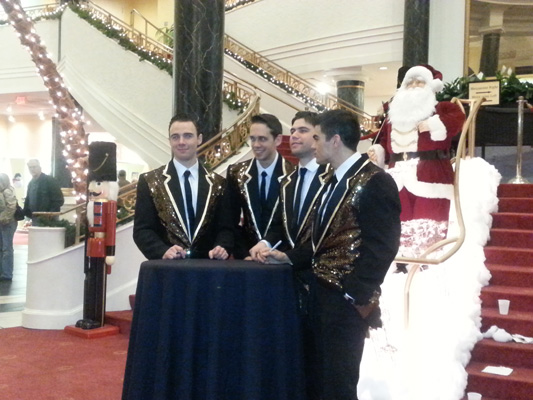 | |
| As if the white sands are not enough to attract people to the beach, they have massive shopping malls and amusement parks, including this building that landed here after a major hurricane--at least that is what they claim. | These guys were main entertainment at a concert called Hot Jersey Nights, highlighting Frankie Valli and The Four Seasons. We had a good time, which turned out to be a great trip down memory lane. | |
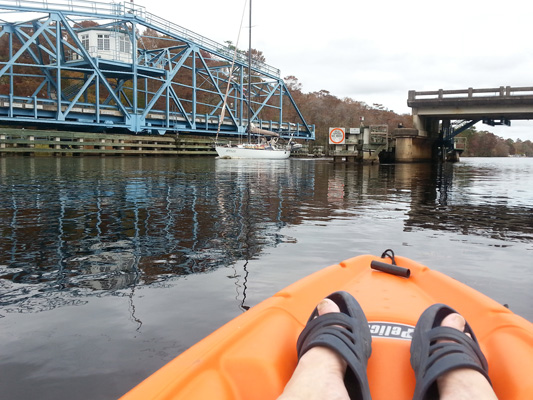 |
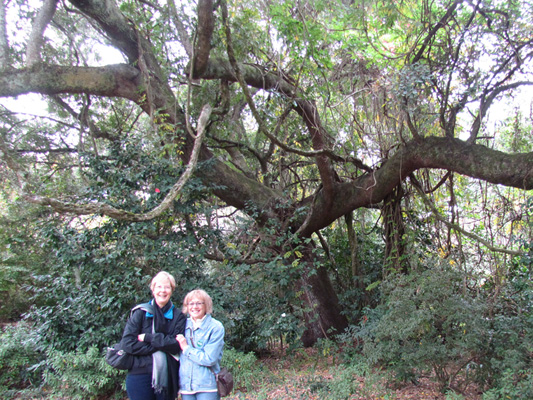 | |
| The RV park bordered the Intercostal Waterway, which runs parallel to the ocean. We rented a kayak from the campground and paddled downstream, where we took this picture of a swing bridge that opened long enough for this sail boat to cruise by. | On to a campground between Charleston, South Carolina and Savannah, Georgia where Kentucky friends David and Diane Bolton joined us to explore the area together. Here Diane and Glorine are walking the grounds of the Magnolia Plantation just outside Charleston. | |
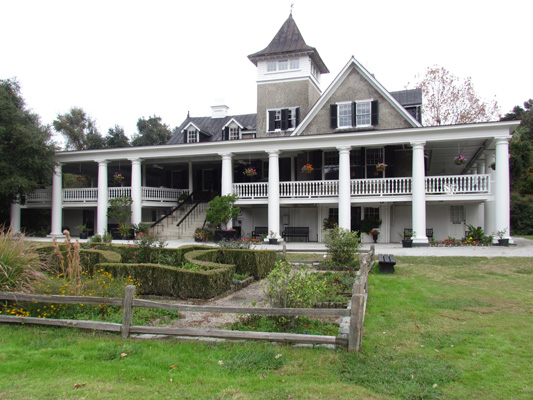 |
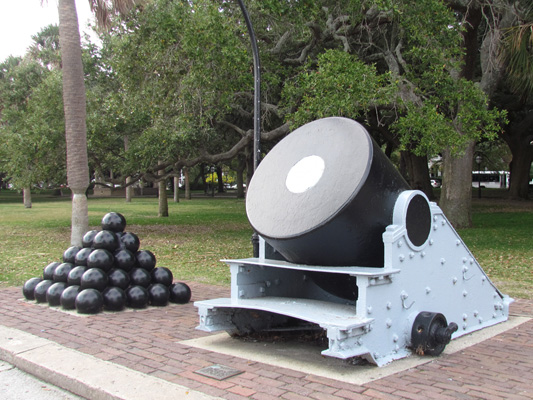 | |
| While the original plantation mansion was burnt to the ground during the Civil War, the Drayton family, who first settled here before the American Revolution, rebuilt Magnolia Mansion, which is now open to the public. It includes a world renowned garden. | On to Charleston where we toured a few of the city's landmarks. This replica cannon in Battery Park represents one of the first shots fired on the Union held Fort Sumter, which started the Civil War. The Park also included memorial to fallen soldiers of the Confederacy. | |
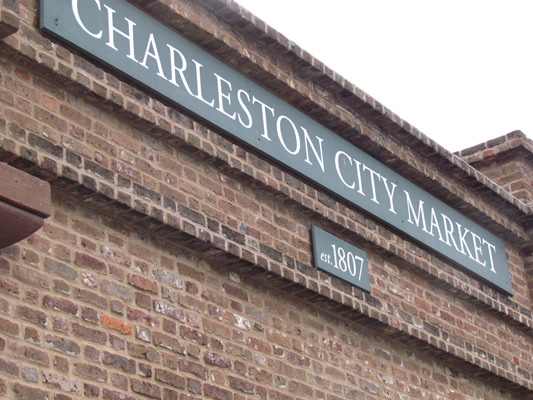 |
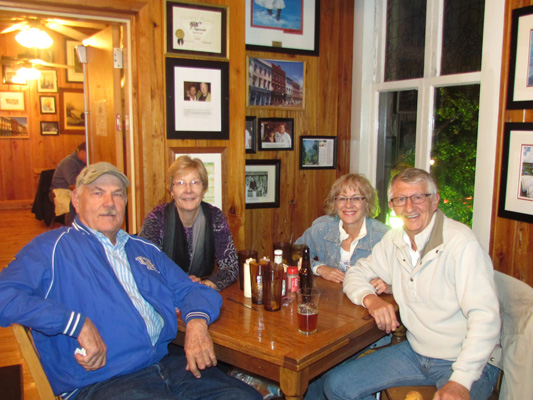 | |
| This city landmark dates back to the early 1800 and stretches four city blocks through downtown Charleston. Initially used as a meat market, and later a farmers market, it is now used by vendors to sell arts, crafts and souvenirs. | After a long day of sightseeing, we had a great seafood dinner at Hymans in downtown Charleston ranked as the number one restaurant in the Southeast. All the tables had placards with names engraved of famous people who had eaten there--our table had Joe Lieberman and John McCain. | |
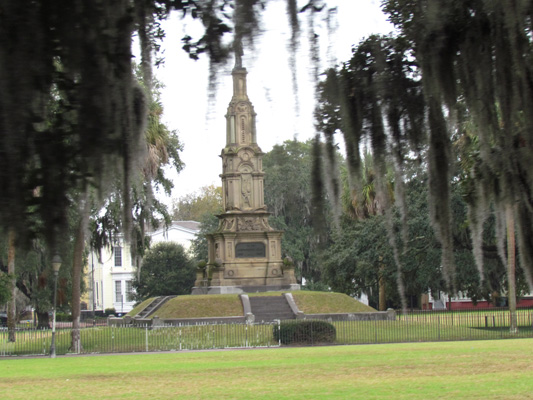 |
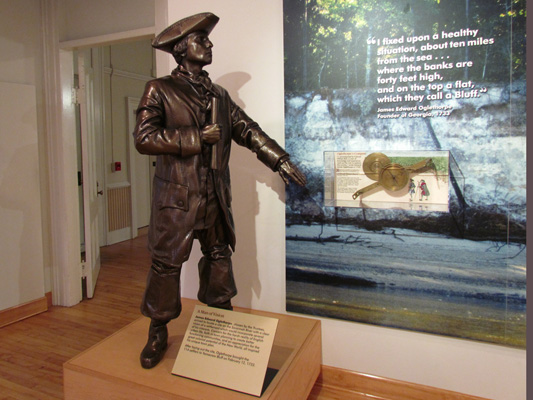 | |
| The beauty of Savannah is beyond description. Thanks to General William Sherman, the Union spared Savannah from the devastation they reaped on other confederate cities near the end of the Civil War. Secondly thanks to the efforts of the Historic Savannah Foundation in the early 1950s, one square mile of downtown is on the National Historic Landmark District. | The credit for the beauty of Savannah goes to this guy, General James Oglethorpe, whose city plan in the mid 1700s was unique in the history of urban planning in a number of respects, not the least of which is that it included 24 squares that allowed for more open space in Savannah than in any city layout in history. | |
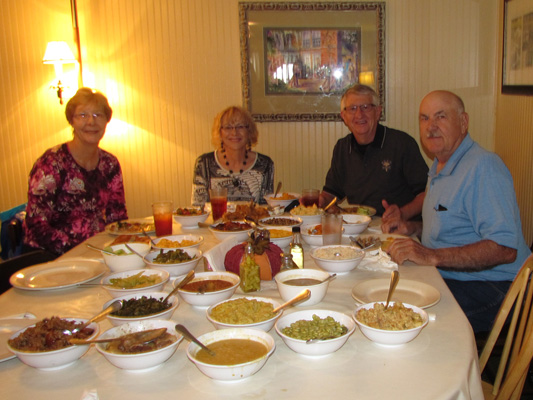 |
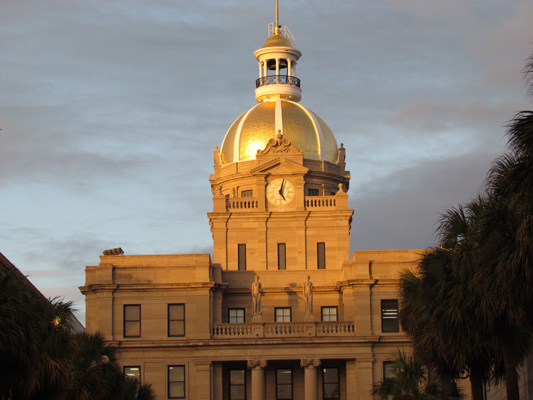 | |
| Lunch time and what could be more fitting than a southern home cooked meal! The Wilkes House, reminiscent of the boarding houses of the past, had 23 dishes of food to choose from. They said if Colonel Sanders of KFC could cook chicken this good, he would be a General. | Savannah was the Capital of Colonial Georgia (named after King George). The capital has since move to Atlanta, but the City Hall is the center piece of Savannah. The clock tower is topped with a copper dome that was coated with gold leaf as recently as 1987. | |
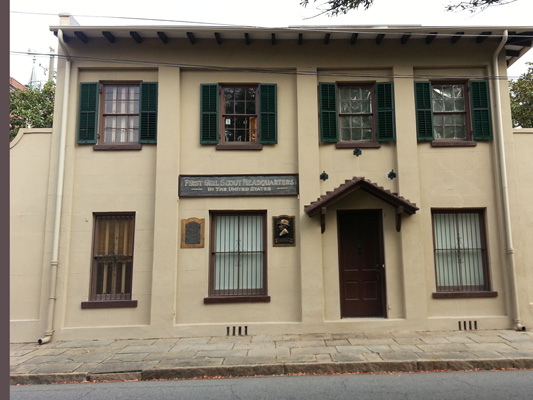 |
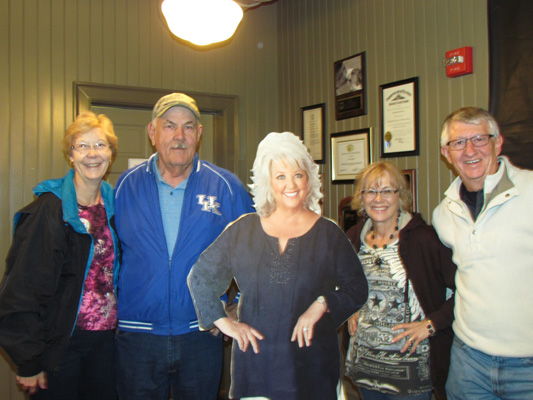 | |
| This building is the birthplace of Juliette Gordon Low, founder of the Girl Scouts of America and is now the National Center. With our granddaughters, Dakota and Sierra currently in girl scouts, it was a fitting place to buy some souvenir badges. Interestingly, Juliette's nickname was Daisy. | If you have cable television, you have probably heard of Paula Deen who brought southern cooking to national attention. While mired in scandal, we stopped by her restaurant in Savannah to pose for pictures!?! We were still filled from Mrs. Wilkes lunch, so we just had dessert at Paula Deen. | |
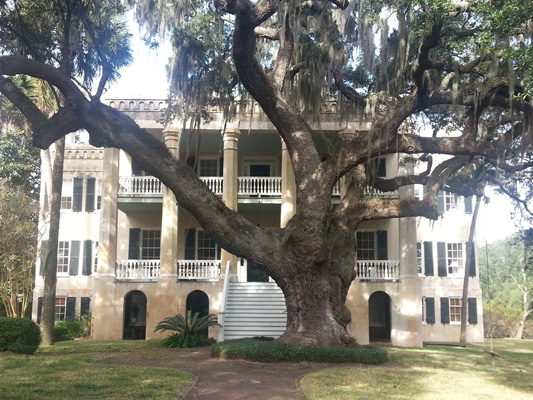 |
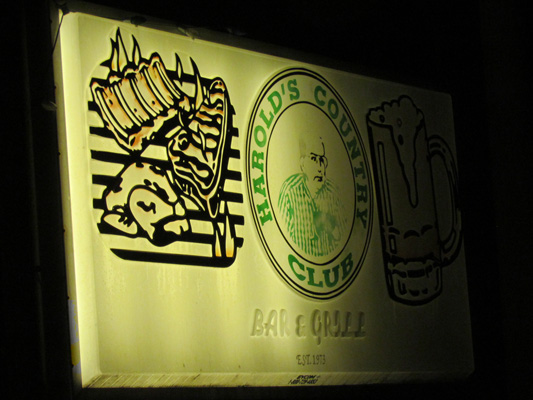 | |
| One last tour with David and Diane was Beaufort, SC. Because it fell early, it was sparred the destruction of both the American Revolution and the Civil War. It is now dubbed one of the most desirable places to retire. That is if you have the money to afford one of these beauties. | From Savannah, we moved to an RV park north of Jacksonville, Florida. Here we were introduced to Harold's Country Club--a place that is not on the list of top tourist attractions, mostly because it is for locals only. It is an abandoned filling station converted to a steak restaurant. | |
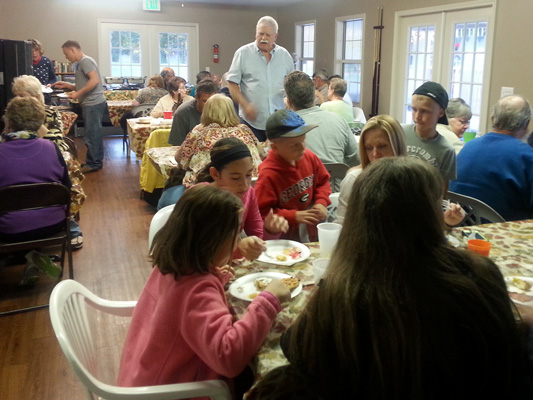 |
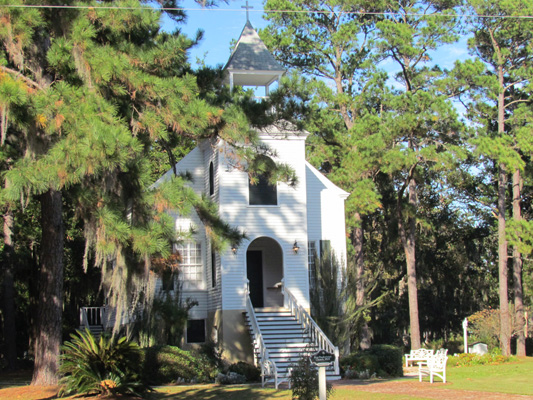 | |
| We spent Thanksgiving at the Clubhouse, where the RV Park provided the turkey and ham and the campers brought all the fixens. What a feast! We got to meet some fellow full-time RVers from upstate New York and Wisconsin. | While on a town tour of St Marys, GA we saw more churches than usual. The narrator said one parishioner left $60 million to one church, and after building a new church distributed the remaining money to all the other churches. | |
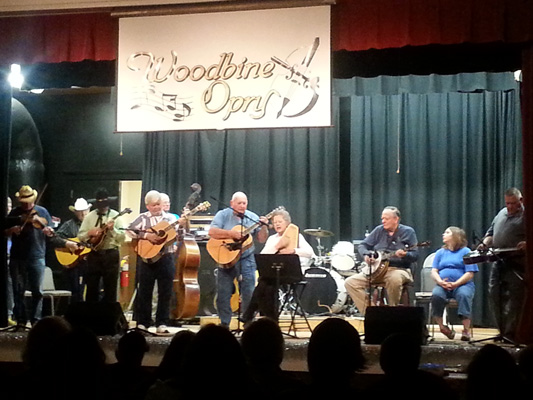 |
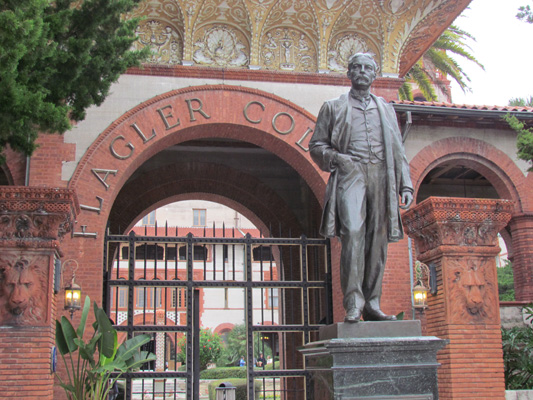 | |
| While in the Southeast, we decided it was time to take in some southern bluegrass and gospel music at the Woodbine (GA) Opry. Thank goodness they played some Christmas songs, otherwise we would not have recognized any of the music. | We took a day trip to the quaint historic town of St. Augustine. One landmark was the exclusive and eloquent Ponce de Leon Hotel, built in the 1888 by co-founder of Standard Oil, Henry M. Flagler. He left his mark here and is said to be the founder of modern day tourism in Florida. | |
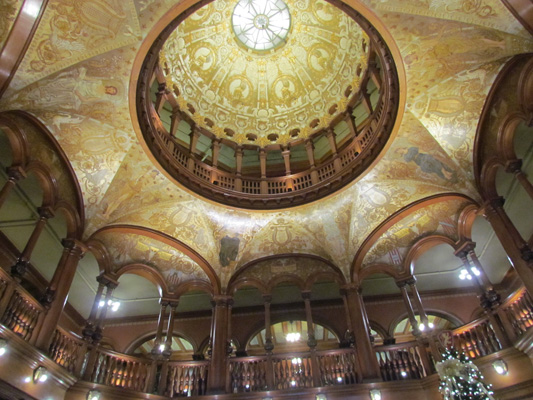 |
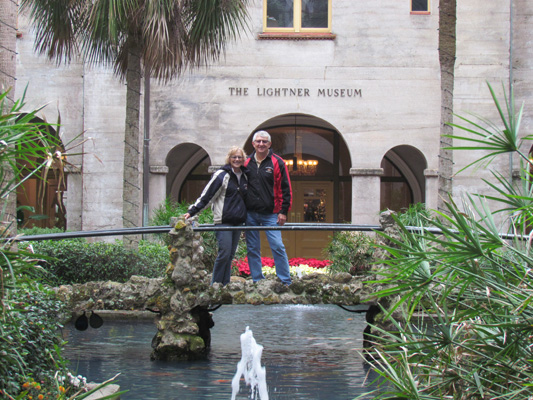 | |
| The hotel was also wired for electricity at the onset, thanks to Flagler's friend, Thomas Edison. After a hundred years of serving as a hotel, the building and grounds are now a part of Flagler College, a private school of just under 3,000 students. | This is the courtyard of Hotel Alcazar, another hotel built by Flagler in 1887, both designed by renowned architects Carrere and Hastings having a Spanish Renaissance style. It was later purchased by the Lightner family of Chicago to house their extensive collection of Victorian memorabilia. | |
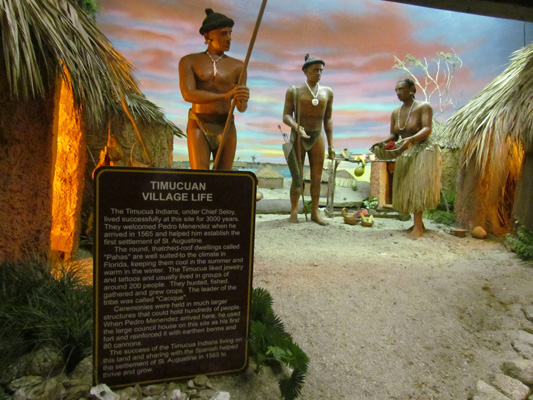 |
 | |
| Before Ponce de Leon stepped foot near St. Augustine, an estimated 200,000 Timeucuan Indians lived in the area. The people suffered severely from the introduction of infectious diseases, to which they had no immunity. By 1700, the population of the tribe had been reduced to 1,000 and are now extinct. | While Jamestown and the Pilgrims get the credit for being the first settlers in the USA, Don Juan Ponce de Leon, stepped foot in Florida nearly 50 years prior to their arrival. In fact, this year is the 500th anniversary of Ponce de Leon's discovery in 1513. | |
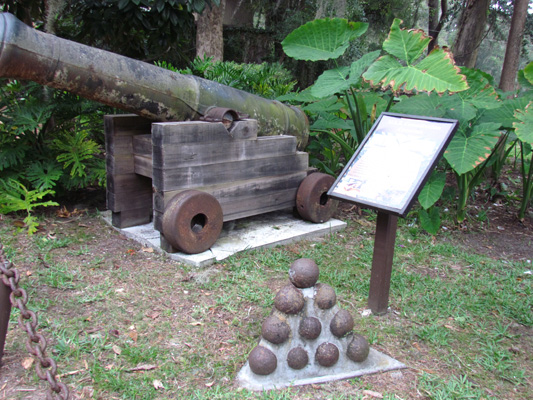 |
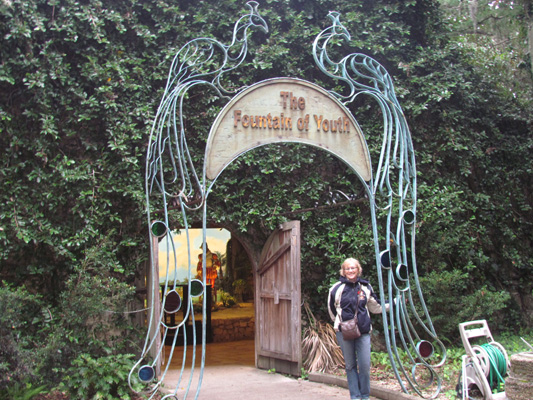 | |
| We were intrigued when we learned that these cannons and cannon balls, here in the Ponce de Leon's Fountain of Youth Archaeological Park once were used on the USS Constitution that we saw in the Boston Harbor this summer. | The restorative powers of the water in the mythical land among indigenous peoples of the Caribbean, was among the reasons Ponce de Leon was searching for the Fountain of Youth when he traveled to what is now Florida. | |
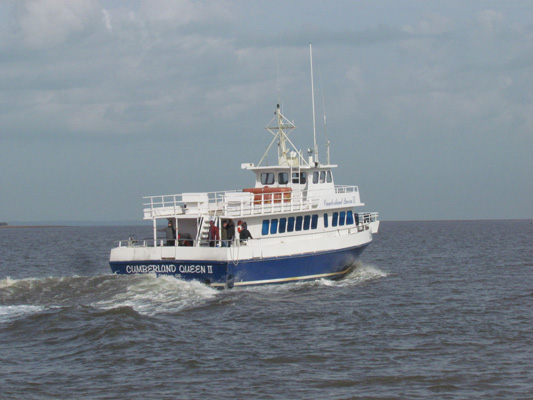 |
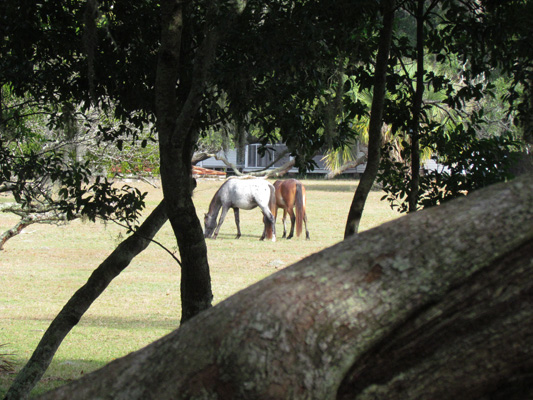 | |
| Our last day trip while in Georgia was to Cumberland Island National Seashore, Georgia's largest and southernmost barrier island. Cumberland is only accessible by ferry which is about a 45 minute boat ride from St Marys, GA. | These are two of the nearly 140 wild horses that roam freely on the 36,415 acre island. While we did not see any, the wild pig population has grown so large that the national park service now issues permits for hunters to help minimize their size. | |
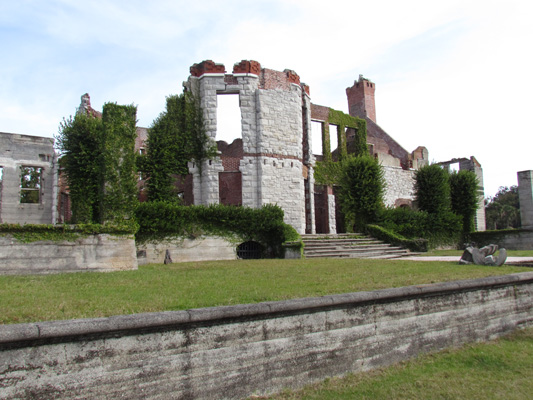 |
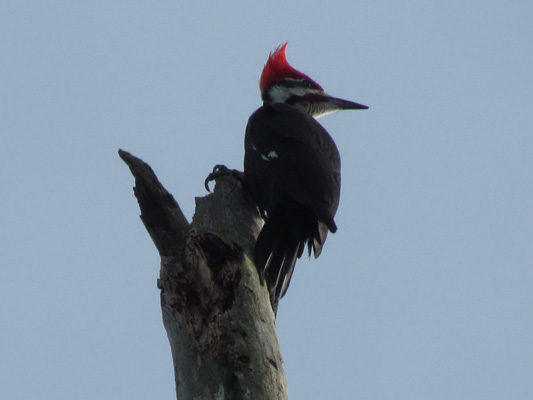 | |
| The island has a rich past with plantation owners including Nathanial Greene, Eli Whitney, and the Carnegie family. While there are a few private properties on the island, most of the mansions were destroyed by either fire or hurricanes. | As we left our day-long trek along the beaches, sand dunes and woodlands, we caught sight of this Pileated Woodpecker posing for this picture. Eighty percent of the island is a national seashore run by the National Park Service. | |
November's web page includes November 1 through November 30.